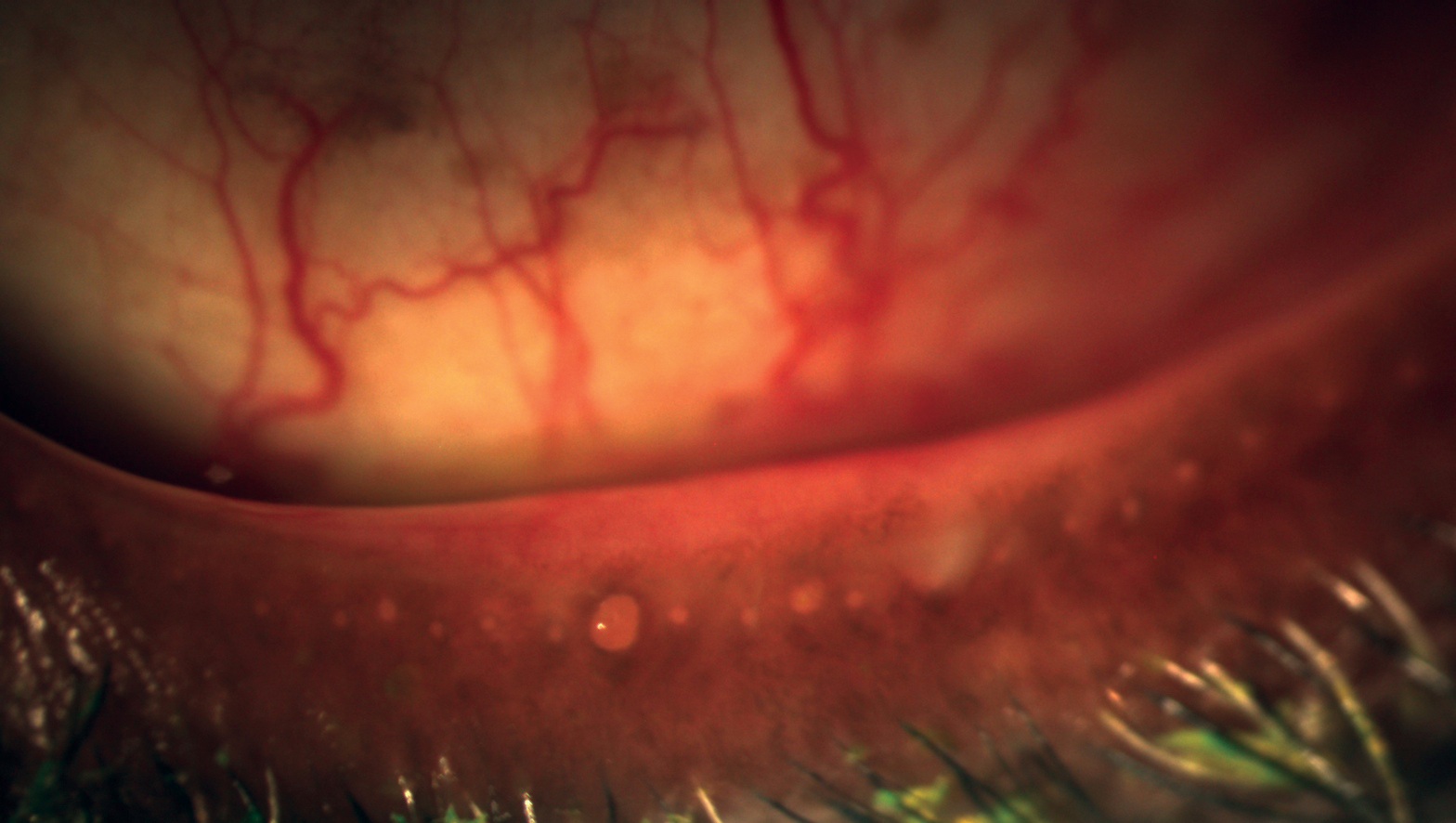 |
| Antibiotics treat meibomian gland dysfunction by altering the eyelid microbiome. Understanding the microbiota of a healthy eye may help to improve disease diagnosis and personalized treatment approaches. Photo: Doan Huynh Kwak, OD. Click image to enlarge. |
Meibomian gland dysfunction is a common cause of evaporative dry eye that results from gland obstruction. Treatments aim at improving the quality and quantity of meibum to relieve dry eye discomfort and associated symptoms. A variety of treatments are routinely used, including warm compresses, intense pulsed light therapy and antibiotics. Recently, researchers compared the efficacy of two routinely used antibiotics: topical azithromycin and oral doxycycline, both of which regulate the meibum and stabilize the ocular surface through their antimicrobial and anti-inflammatory properties. The researchers found that both treatments were effective, but the topical route seemed to perform better for improving tear film quality.
The prospective study included 56 patients, half of whom were treated twice daily for four weeks with topical azithromycin 1% eyedrops (group 1) while the other half received oral doxycycline 100mg capsules twice daily for four weeks (group 2).
The two groups demonstrated a significant difference in pain and discomfort degree at the first follow-up visit, with group 1 reporting a higher number of patients with a mild pain degree and group 2 reporting a higher number of patients with a severe pain degree. Moderate pain degree and lid margin telangiectasia weren’t significantly different between the two groups, but conjunctivitis, frothy discharge and meniscus floaters were significantly greater in group 1.
Tear break-up time was significantly higher in group 1 than group 2. At the second follow-up visit, only meniscus floaters were significantly higher in group 2 vs. group 1, but group 1 had a significantly higher tear break-up time. The researchers observed no other significant differences between the two groups.
The researchers concluded that both treatments were effective at improving symptoms, signs and the tear film, but the “topical group seemed to be superior over [the] oral group in improving the quality of the tear film in the short term, with fewer side effects, more compliance and better tolerability.”
Zaky MA, Zaky AG, Elsawy MF, et al. Efficacy of topical azithromycin versus systemic doxycycline in treatment of meibomian gland dysfunction. Hindawi J Ophthalmol 2023. [Epub August 8, 2023]. |

